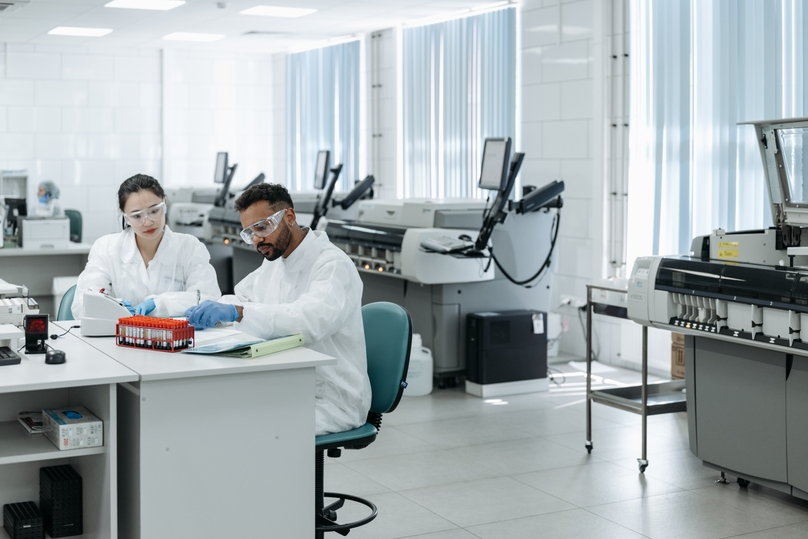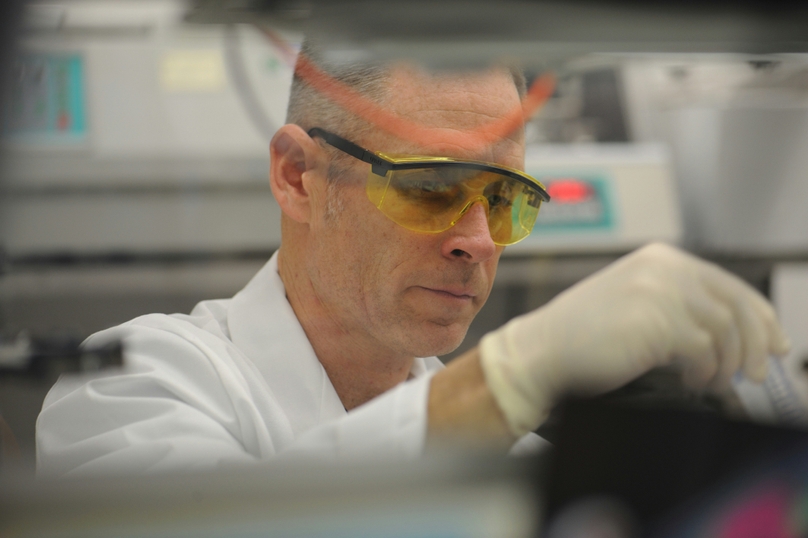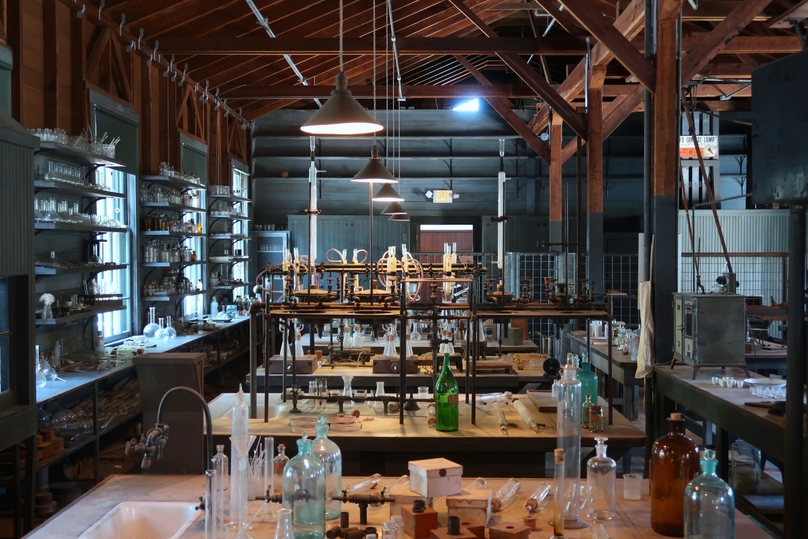The Importance of Lab Safety Rules
As a lab manager, the importance of maintaining lab safety cannot be overemphasized. If safety rules are not followed, hazards will quickly arise. By familiarizing yourself with proper safety procedures, you can reduce the risk of hazards and know exactly what to do in case an unfortunate event arises.
Lab hazards fall into three general categories. These are:
- Physical: Physical hazards include those involving electrical safety, handling of materials, and handling sharp instruments.
- Chemical: Chemical hazards can be caused by improper handling of samples, agents, reagents, or other substances such as liquid nitrogen.
- Biological: Biological hazards are related to the handling of recombinant organisms, microbes, and viral vectors.
In this article, we will review laboratory safety rules and guidelines and how to implement them.
Trying to streamline the workflow and processes of your lab? Try lab automation with a LIMS from Genemod to take the next step in your lab’s efficiency.
Implementing Lab Safety Rules
There are many ways you can keep your lab team aware of safety issues and specific protocols. An obvious one is to post signs throughout the lab outlining warnings and safety procedures. You could also send out regular emails to your team updating them on safety protocols and plan regular presentations or workshops around lab safety rules.
One of the easiest and most efficient ways to implement your lab’s safety rules is to store them in an electronic lab notebook. You can also keep an inventory of safety equipment, safety data sheets, and a list of safety precautions. This will enable you to share it with all the members of your lab team and they will have access to it at any time.
Top 9 Lab Safety Rules for 2022
All members of your laboratory team must be aware of the following safety rules. These rules must be followed at all times to prevent unnecessary risk and possible accidents or injury.
1. Stock Up on Personal Protective Equipment
You should maintain a full supply of Personal Protective Equipment (PPE) in your lab. When purchasing these supplies, you should ensure that the equipment is compatible with the hazardous chemicals and processes used in your lab. Your PPE stock should include:
- Eye protection: Protective goggles or safety glasses should be put on by lab team members and visitors before entering any wet bench lab. Safety glasses must have side shields and meet the ANSI Z87.1 - 2010 standard for impact resistance. Prescription eyeglasses should be worn under safety goggles specially designed for this purpose.
- Face protection: Face shields may be required for some lab processes. They should be worn over prescription glasses or safety glasses, not as a substitute for them.
- Hand protection: Chemical resistant gloves should be used when handling chemicals They should not put the wearer at risk due to loss of dexterity (such as difficult handling pipettes) nor should they pose a risk of injury due to their weight or stiffness, or loose material that could be caught in a machine. A popular all-purpose glove is the nitrile exam glove.
2. Install an Eyewash Station
An eyewash station is a unit that is specially designed for rinsing chemicals or other substances that have splashed into a clinician’s eyes before they seek further medical attention. Eyes should be washed immediately for at least 15 minutes. Some labs may also require a safety shower for emergency showers after a splash or spillage.
As of 2018, laboratories using or storing chemical or corrosive materials must have an eyewash station located less than 50 feet from your work area in the same room. According to The American National Standards Institute (ANSI), eyewashes should be tested weekly. You must keep documentation detailing when eye stations were tested.
3. Store a First Aid Kit Nearby
Every laboratory should keep an approved and well-stocked first aid kit. First aid kits should be located in a place where they are visible and easy to access. You can maintain a list of the contents of your first aid kit in the safety section of your lab’s electronic notebook. Your first aid kit should contain the following:
- Assorted band aids
- Tourniquets
- Adhesive bandages
- Sterile compress bandages
- Adhesive tape rolls
- Burn ointments
- A CPR mouth shield
- Fingertip bandages
- Instant cold packs
- Sterile gauze
- Triangular bandages with safety pins
- Triple antibiotic ointment
- Waterproof adhesive tape
- A fire blanket
- Sterile alcohol prep pads
4. Dress Appropriately
Lab team members should wear long pants or skirts and closed-toe shoes. Short skirts, shorts, loose clothing, sandals, and dangling jewelry should not be worn. Long hair should be tied back at all times.
Long-sleeved lab coats should be put on before entering the lab. The lab coat should cover the wearer to the knees. Clinicians who are working in a lab using open flames or pyrophoric materials should wear a lab coat made of flame-resistant material. Aprons may also be used when handling hazardous chemicals or solvents.
5. Practice Fire Safety
Many labs, particularly those using alcohol burners or solvents have a high potential for flash fires, explosions, and rapid fire spread. To reduce the risk of fire, your team should keep the lab tidy and store materials safely.
Flammable liquids should be kept in special storage cabinets. Outlets should not be overloaded, and extension cords should not be used. You should keep a fire blanket in your first aid kit. Your lab should have an easily accessible fire alarm system.
You must have appropriate fire extinguishers for the substance you use. Fire extinguishers are classed by the type of fire they put out.
- Class A: paper, wood, textile, and some plastics.
- Class B: flammable liquids
- Class C: electrically conductive fires
- Class D: flammable solids such as titanium, sodium, or magnesium.
Many fire extinguishers are Class A, B, and C combined.
6. Avoid Food or Drinks in the Lab
Eating, drinking, and chewing gum should be prohibited in the lab where hazardous materials are used. Taking medicines should also not be permitted. Any eating or drinking utensils such as cups, plats, and silverware should not be stored anywhere near where hazardous materials are stored or handled.
7. Check All Equipment
To maximize the use and safety of your lab electrical equipment, you should wipe down the exterior of all equipment at the end of each day. Equipment should be deep cleaned weekly. As lab manager, you should be aware of any special processes required for cleaning equipment.
Equipment should be calibrated regularly. The best way to ensure this is done correctly is to take an inventory of your lab equipment and decide which type of maintenance is most suitable, for example, basic preventative maintenance or advanced maintenance. Your lab equipment inventory and safety and maintenance protocols can be stored in your electronic lab notebook where they can be accessed at any time.
8. Properly Dispose of Waste
There are three main means of safely disposing of laboratory waste. These are:
- Trash disposal: This is suitable for non-hazardous materials.
- Specialized disposal boxes: These waste containers are designed for certain types of material. For example, sharp and broken glass, culture stocks, and human blood products.
- Offsite treatment: To ensure biosafety, some chemical waste, such as pathogens, may need to be taken offsite by a professional company for treatment or recycling.
All substances used in your laboratory should be kept in their original containers and properly labeled with the correct disposal methods.
9. Carefully Follow All Instructions
Safety protocols and procedure instructions should all be followed closely. Each of your team members should be familiar with all safety rules and regulations from the outset.
All warnings should be heeded. All materials should be handled properly and safely using the correct implements and PPE. It can benefit your team to have regular updates on safety protocols and procedures.
If you’re having trouble keeping track of your lab’s reagents and libraries for DNA sequence editing, check out Genemod’s electronic lab notebook software for a user-friendly tool to transform your workplace.
Lab Safety Rules with Genemod
Maintaining lab safety is crucial for your team members and the quality of your research. It is also important that everyone who works in your laboratory is aware of all the safety regulations and knows exactly what to do if a hazard arises.
With the help of Genemod’s electronic lab notebook (ELN), you can easily coordinate lab protocols and plan ahead for safety. Contact our team at Genemod today so we can discuss how we can help you customize an ELN for your laboratory. We can even provide you with a free demo.















